Supporters of day-night Test cricket have found a new voice in Rahul Dravid.
The former India captain wants cricket administrators to approach the introduction of day-night Tests with an open mind in order to boost spectator interest in the longer format of the game.
Speaking at an event organised by ESPNcricinfo, in London on Monday, the 40-year-old whose 17-year career brought him more than 24,000 international runs, highlighted the importance of Test cricket and suggested ways for bolstering the acceptance of the longer format of the game across the world.
"If it means playing day-night cricket, we must give it a try, keep an open mind," Dravid, the third-highest run-scorer in Tests, said.
"The game's traditions aren't under threat if we play Test cricket under lights.
"I know there have been concerns about the durability of the pink ball, but I have had some experience of it, having played for the MCC, and it seemed to hold up okay," he added.
'Day-night cricket could get more people in the stands'
Image: The special guests at the event organised by ESPNcricinfo in London on MondayOn a night that featured speeches by other special guests, including former England captain Nasser Hussain, former England international and respected author, journalist and broadcaster Ed Smith, and Commercial Director, Sky Sports, Richard Verow, Dravid’s keynote address was the standout.
"It could be an issue at places where dew sets in at certain times of the year, but scheduled at the right places at the right times, it could get Test cricket what it needs most: some more people in the stands."
The idea of floodlit Test cricket, possibly played with a pink, orange or yellow ball, in more spectator-friendly hours, has found acceptance in a wide section of the cricketing fraternity in recent years.
While doubts still remain about its technical viability, the International Cricket Council last year approved the idea of day-night Test matches but left it to member boards to decide on the hours of play and the colour of the ball.
'Moving with the times does not mean embracing only T20'
Image: Rahul Dravid and Nasser Hussain at the event organised by ESPNcricinfo in London on MondayDravid also asserted that Test cricket should be given its due importance even as T20 cricket gains in popularity.
"Moving with the times does not mean embracing only T20 and trashing Test cricket," Dravid, who retired from international cricket last year, said.
"It means finding a way to retain the best form of the game in a contemporary environment.
"Remember, while it did take long, there's even a roof over Wimbledon Centre Court these days.
"Day-night Tests remain a work in progress but we can start by sorting out the scheduling around Test cricket, to ensure that teams can complete their home and away cycles against each other over a four-year period," he added.
'Test cricket is the trunk of a tree'
Image: Rahul Dravid at the event organised by ESPNcricinfo in London on Monday"Test cricket, an older, larger entity is the trunk of a tree and the shorter game -- be it T20 or ODIs -- is its branches; its offshoots," he said.
"Now to be fair, it is the branches that carry the fruit, earn the benefits of the larger garden in which they stand and so catch the eye. The trunk, though, is the old, massive, larger thing which took a very long time to reach height and bulk. But it is actually a life source: chip away at the trunk or cut it down and the branches will fall off, the fruit will dry up," explained Dravid.
"While Test cricket has proved its resilience over a century and is a tough old dog, we must understand that no matter what the crises past, it has reached a fairly critical point in its history."
'The core of every cricketer's game is enriched by playing four and five-day cricket'
Image: The special guests share their views at the event organised by ESPNcricinfo in London on Monday"We are, I believe, maybe one generation away from reaching the point where our entire youth structures could cater only to T20 without any emphasis on the longer form of the game. By not giving youngsters a chance to explore their versatility, endurance or even improvisational skills, we will be selling ourselves and our sport well short," Dravid said.
"The fundamental core of every cricketer's game is enriched by playing four and five-day cricket. By using those well-trained powers of adaptability, discipline, resilience and focus as a T20 cricketer, you will have double the advantage than the player possessed only of talent and timing.
"The skill of learning how to think clearly under pressure is required in T20, but it is built through having to endure pressure for a session, two sessions, an entire day, a series of spells," he said.
'Remove a lot of One-day cricket that we keep playing'
Image: Rahul Dravid at the event organised by ESPNcricinfo in London on MondayDravid slammed the current trend of holding two-Test series between countries to accommodate T20 matches as "nothingness of a nothing" and backed a successful launch of the world Test championship.
“I would play one day cricket only as a preparation to the big tournaments -- the 50-over tournament and to the Champions Trophy.
"So you can remove a lot of the One-day cricket that we keep playing nowadays and fit in the extra Test matches that are required. Have a Test championship that culminates in something once every two years, T20 championship every two or three years.
"Also, T20 cricket should be franchise cricket except for the major tournaments,” he said.
'The success we see in Indian cricket has come from the money that the BCCI has been able to get'
Image: Rahul Dravid"India," he said, "is trying, in a lot of ways, to become the best cricket team in the world; the best one-day cricket team in the world; the best 20-20 team in the world.
"I hope the best Test team in the world. A lot of the success we see in Indian cricket today has come from some of the money that Indian cricket, or the BCCI, has been able to get for the Indian game.
"For the board. I mean, you have facilities today in nooks and corners of the country where, you know, you wouldn’t have dreamt of.
"Most of our cricketers today come from small towns and cities that, 10, 20 years ago would just not have had the facilities to be able to play. The pool of players that we are going to be selecting from in the next decade is going to be much, much larger than any time in our history.”

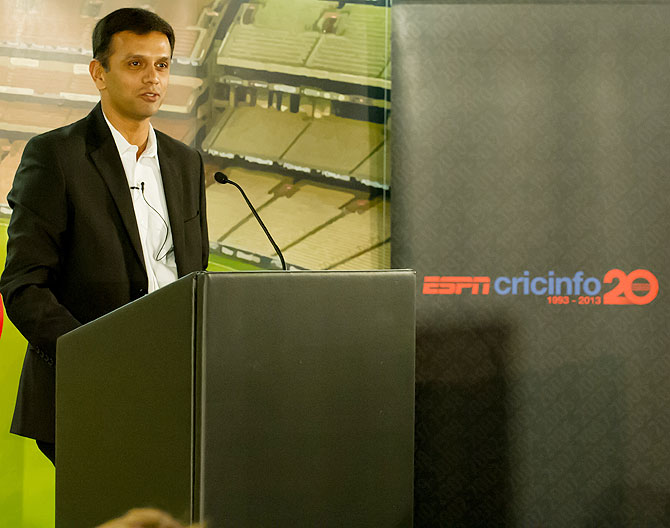
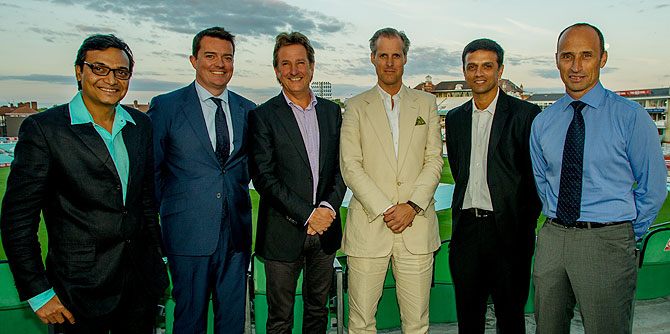
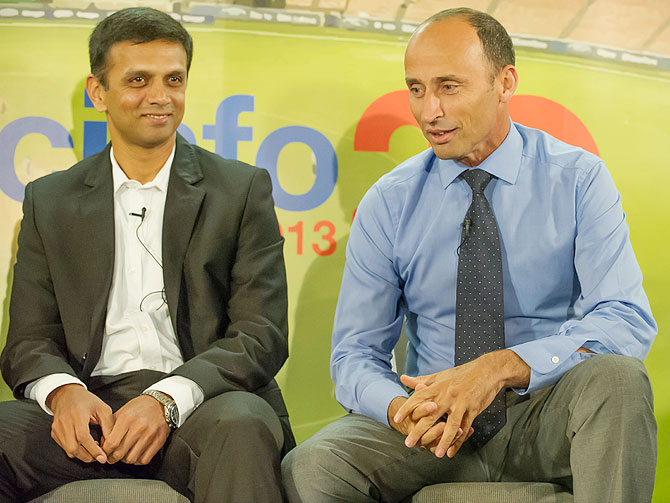
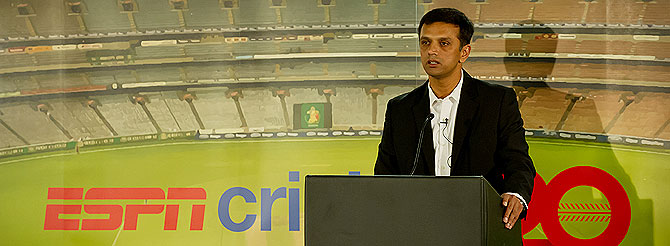
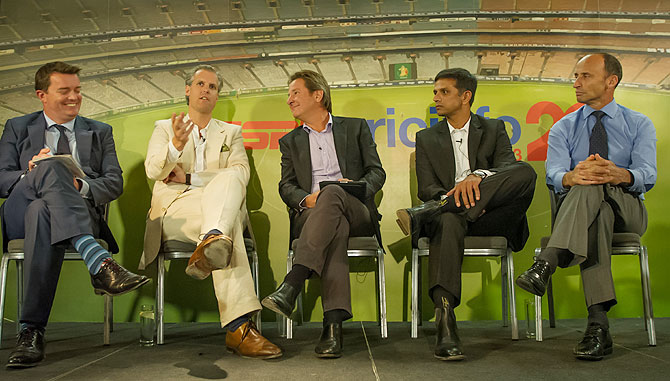

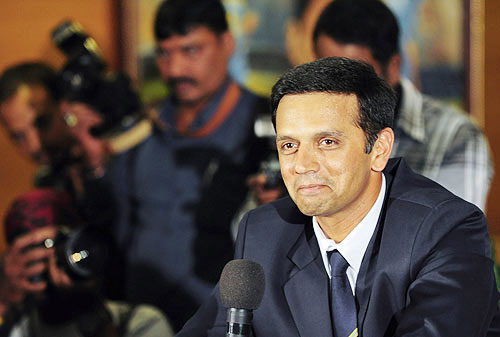
Comment
article